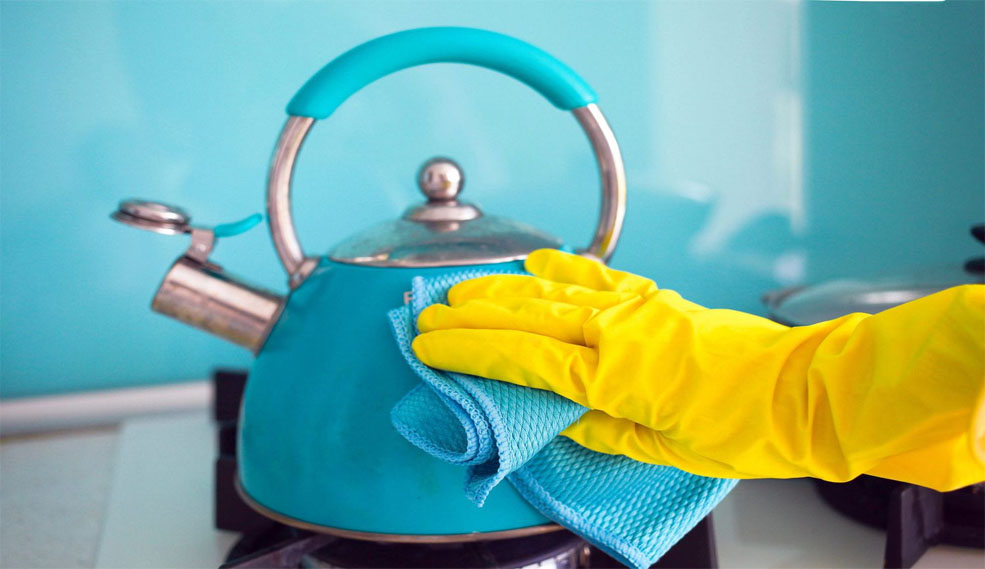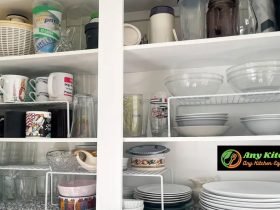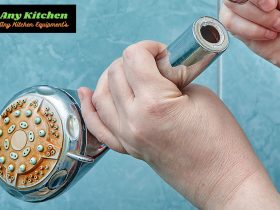Cleaning your electric kettle is important if you want your hot drinks to taste as good as ever and for the gadget to keep working well. But what if you don’t want to use vinegar to clean it? We’ve got you covered, whether you’re worried about the smell or just don’t have vinegar on hand.
This guide, How to clean electric kettle without vinegar? will show you effective ways to clean your electric kettle that doesn’t involve vinegar. This way, you won’t have to use the vinegar solution. With our step-by-step steps, you can say goodbye to hard-to-remove limescale and hello to a clean kettle that shines.
Do Electric Kettles Need to be Cleaned?
Electric kettles do need to be cleaned regularly. Over time, mineral layers, also called limescale, can build up inside the kettle, causing it to work less well and possibly changing the way your drinks taste. Also, if you don’t clean it right, bugs or other dirt can build up and cause health problems. Cleaning your electric kettle keeps it working well, makes sure your drinks taste their best, and helps the device last longer. If you live in an area with hard water, you need to clean more often because limescale builds up faster. There are many ways, including some that don’t involve vinegar, to keep your electric kettle in great shape.
What is descaling?
Descaling is a cleaning process that involves removing mineral deposits, mostly calcium and magnesium ions, from kettles, coffee makers, faucets, and other appliances and surfaces. Because hard water leaves behind a white, chalky waste, limescale builds up. Descaling helps these machines work better, keeps them from getting clogged, and makes them last longer. Most of the time, it includes using descaling solutions or natural alternatives like vinegar or citric acid to dissolve and remove the limescale. This keeps the appliances working well.
How to clean electric kettle without vinegar 5 easy ways
Lemon Water Method
The Lemon Water Method is a good way to clean your electric kettle that doesn’t use vinegar and is good for the environment. Start by putting water and lemon juice in your pot. Usually, one part lemon juice to two parts water works well. Add some lemon slices or wedges to the solution to make it smell nice and make it work better. Then, bring the mixture to a boil and let it sit for about 15 to 20 minutes. After that, throw away the solution and wash the kettle well with clean water to get rid of any lemon residue that is still there. This method not only helps get rid of limescale and mineral layers, but it also leaves your kettle smelling clean and ready to use.
Baking Soda Method
The Baking Soda Method is a safe and effective way to clean an electric pot if you don’t want to use vinegar. Start by putting about 2 to 4 tablespoons of baking soda per liter of water in your pot and filling it with water. Mix the ingredients until all of the baking soda is gone. Then, bring the solution to a boil and let it cook for 10 to 15 minutes. This helps break down mineral layers and limescale inside the kettle. Then, throw away the solution, fully rinse the kettle with clean water, and wipe it clean. The Baking Soda Method not only gets rid of buildup, but it also gets rid of smells and gets your kettle ready for your next hot drink.
Citric Acid Method
If you don’t like the smell of vinegar, the Citric Acid Method is a strong and very good way to clean your electric kettle. Start by mixing one to two tablespoons of citric acid per liter of water into a solution of water and citric acid. Stir until all of the citric acid is gone. Put the solution in the pan and heat it up until it boils. Limescale and mineral layers will dissolve if you let it simmer for 15 to 20 minutes. Then, throw away the solution, rinse the kettle well with clean water, and dry it with a towel. The Citric Acid Method not only removes buildup well but also leaves your kettle smelling clean and ready to use without a vinegar smell.
Coca Cola Method
A lot of people don’t know that Coca-Cola works well to clean an electric pot. Coca-Cola has carbonic acid in it, which can stop limescale from building up in the kettle. Follow these steps to use Coke the right way:
- Put coke in your pot and let it boil.
- Don’t change the solution for about 30 minutes.
- Once the cola in the kettle has cooled down, pour it out.
- Clean the pot well and rinse it out with clean water.
Using Salt
You can use salt if you don’t have vinegar or baking soda. It is another thing that comes from nature that can be used to clean.
Mix the same amount of salt and water in a bowl or cup to clean your electric kettle. Dip your brush or cloth into the solution and use it to clean the bottom, sides, and top of the kettle. Rinse well with warm water, then pat dry.
How to Clean Your Kettle’s Exterior
Cleaning the outside of the kettle is just as important as cleaning the inside. Many of us use our kettle all the time without ever cleaning the outside. Because of this, the pot loses its shine and gets dull. On the outside of the pot, dust or marks can build up.
So it’s clear that you also need to pay attention to the outside. Follow these steps to keep the outside of your pot clean:
Step 1: Spray an antibacterial cleaner on a clean, wet cloth. Then, use the cloth to wipe the outside to get rid of any residue.
Step 2: To clean a stainless steel pot, use olive oil. This will make your kettle look brand new and shiny.
How Often Should You Clean A Kettle?

Well, in general, we recommend using fresh water to clean your electric pot after each use. But when limescale and rust start to build up, you need different methods to stop them from sticking. If that’s the case, you can try different things at least once a week. Because if you don’t clean your pot, it won’t last as long.
If you live in a place where the water is hard, you need to clean your pot more often. Because hard water can make your pot not work as well. So, to keep your pot from breaking down, it’s best to keep it clean.
Advice on how to clean an electric kettle
- Don’t put the whole pot into the water. Because if you do this, you could hurt the heating part inside your kettle.
- Don’t leave any water in the pot after you use it. It can make it more likely that mineral layers will form on the inside of your kettle.
- Use a soft microfiber cloth or soft sponge to rub your pot clean every time. You can wipe the outside of your pot with olive oil or soapy water.
- Don’t forget to turn off your pot before you clean it. Leaving it on can kill you in the long run.
- Make sure to keep the parts of your pot that use electricity dry. If you don’t, your pot might stop working for now.
Conclusion
There are other ways to clean your electric kettle if you don’t like the smell or don’t want to use vinegar. You can clean your kettle of limescale whether you use baking soda, orange juice, citric acid, or even Coca-Cola. It tastes better, lasts longer, and works better when you clean the device often. Your electric kettle will be clean enough to make your favorite drinks without leaving any smells or residues behind if you follow the steps given. Let’s toast clean and tasty hot drinks!
Read More Article: How to clean Chefman electric kettle?
Frequently Asked Questions
How do you clean a kettle without vinegar and baking soda?
Use lemon juice or citric acid
Lemon juice and citric acid are both good ways to clean. The acid is a natural bleach and cleanser, and the smell of lemon will make your kitchen smell fresh and clean.
Can we use oil in the electric kettle?
Oil in an electric kettle would just get hotter and hotter until the plastic body melted and hot oil went everywhere, or, if the kettle was made of metal, it reached the flash point and caught fire. Don’t even consider doing it.










Leave a Reply